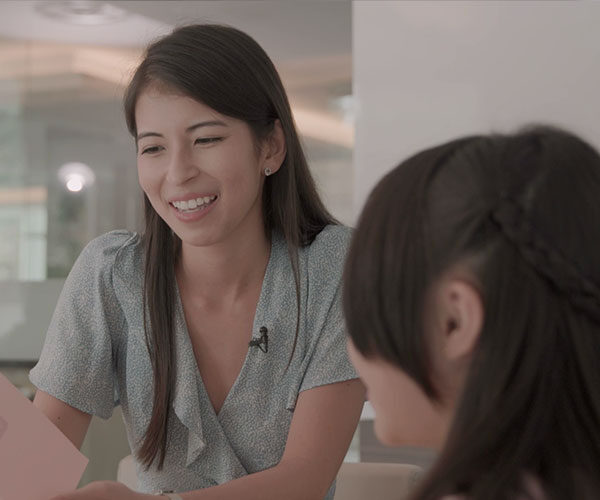
Due to the Achievement Level (AL) scoring system coming into effect this year, choosing a secondary school for your child is now a vastly different proposition than when you yourself took the PSLE. Back then, you had a numerical T-score and helpful cut-off points for each school based on the previous year’s results. This year, your child will have neither.
To top it off, the Ministry of Education (MOE) has announced that, for the first time ever, choice order will be used as a tie-breaker to determine which school your child is posted to. The order in which your child ranks his or her six secondary school choices on the S1 Option Form may now have a significant impact on the final outcome.

Tie-Breakers Under the AL Scoring System
Tie-breakers have always been used in situations where two or more students with identical T-scores are vying for the last available place at a secondary school. Under the AL scoring system, however, there is a smaller range of possible PSLE Scores (29) than there were T-scores (over 200). This means that more students will have the same PSLE Score, and that ties will happen more frequently.
The MOE has thus introduced choice order as a tie-breaker to refine the S1 posting process and “recognise the different considerations that families have in making school choices”. Such considerations can include the school’s ethos, culture, programmes and CCAs, as well as distance between the school and home.
| S1 Posting Process Tie-Breakers (in order of priority) | |
|---|---|
| With T-score (2020 and before) | With ALs/PSLE Score (2021 onwards) |
1. Citizenship: 2. Computerised balloting (or random chance) |
1. Citizenship 2. Choice order (new) 3. Computerised balloting |

How Choice Order Affects S1 Posting – An Example
Imagine that we have two P6 students – let’s call them Eli and Eliza. Both are Singapore Citizens, have a PSLE Score of 9 and picked Rocket Secondary School as one of their six choices. Unfortunately, there is only one place left. Are they immediately put through the computerised ballot then?
With choice order as a tie-breaker, not necessarily. Rocket Secondary School is Eliza’s dream school, so she put it as her top choice.
Eli, on the other hand, only put Rocket as his third choice. In this case, the last remaining place will go to Eliza.
Under the old T-score system, Eliza would not have had this advantage. As long as Eli did not get into either of his top two choices, the competition for the last place in Rocket Secondary School would still come down to computerised balloting. This is because the old system did not take choice order into consideration.
It’s also important to remember that choice order only matters in the event of a tie between two or more students with the same PSLE Score. Academic merit remains the main criterion for successful posting. A student with a PSLE Score of 5 who put Rocket Secondary School as his second choice, for example, will still be offered a place before Eliza.

Choosing Your Child’s Secondary School (Choice Order)
How then should you and your child approach the task of ranking his or her secondary school choices? There are a few factors that you might want to consider when making your decision.
Firstly, how does your child’s PSLE Score compare with the indicative cut-off points of the schools he or she has chosen?
If it’s precisely at or just misses the cut-off points for some, there is at least a chance your child might be competing for the last available place at these schools, when tie-breakers such as choice order come into play.
Ironically, this is when cut-off points become less important. It might be more productive to remember what reasons other than cut-off point led you and your child to choose these particular schools in the first place.
For instance, did your child like what he or she saw at the school’s open house? Are there CCAs or special programmes there that appeal to your child? Does the school have a good track record of nurturing students with the same kinds of talents as your child? Each ‘Yes’ answer to questions like these should strengthen the case for ranking that school higher, even if some of your child’s other choices have lower cut-off points.
According to the MOE, part of the reason for introducing choice order as a tie-breaker was also to “encourage families to think more deeply about the schools they are choosing and look beyond schools’ cut-off points”. The convenient strategy of ranking schools in ascending order of cut-off point just won’t cut it anymore. Instead, take the time to evaluate each of your child’s choices and decide on an order that will maximise the chances of getting into the school he or she feels most strongly about.

Are Other Priorities and Advantages Affected by This Change?
The short and happy answer is no. Students who take Higher Chinese in primary school still get a posting advantage for admission to SAP schools, and students from affiliated primary schools still get priority when they indicate the affiliated secondary school as their first choice.
The Learning Lab is now at locations. Find a location that suits your needs.
If you have any questions about our range of programmes or class schedules, you may contact us at 6733 8711 or drop us an email at enquiry@thelearninglab.com.sg.

Partnering Your Child Beyond the PSLE Landscape
The PSLE may be done and dusted, but at The Learning Lab, our support doesn’t end just because the exams have. From checking in on their wellbeing to offering advice and encouragement for what comes next, our teachers are dedicated to seeing their students succeed in both school and life.
Click here to find out the challenges and how we can help your child make the transition from primary to secondary school.


